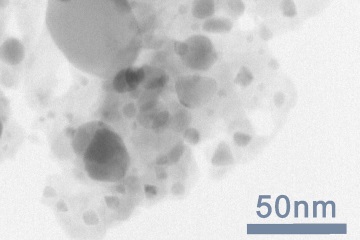New catalyst accelerates the release of hydrogen from ammonia
Large-scale project aims to facilitate the import of green hydrogen

© Franz-Philipp Schmidt, Thomas Lunkenbein, adaptiert: Shilong, C.et al. Nature Communications (2024), https://creativecommons.org/licenses/by/4.0
Germany will probably only be able to meet its future demand for climate-friendly hydrogen by importing it from South America or Australia. For such long transport routes, the hydrogen can be converted into ammonia, for example. In order to facilitate the subsequent recovery of the hydrogen, researchers at the University of Duisburg-Essen have joined forces with their cooperation partners to develop a more active and cost-efficient catalyser.
The results are part of the TransHyDE hydrogen lead project of the Federal Ministry of Education and Research (BMBF).
Hydrogen offers the possibility of storing energy from wind and solar power. In addition to being used as a storage medium, hydrogen is also required for various other processes. However, importing hydrogen from regions where wind and solar power is cheap is not easy. One alternative is the chemical conversion of hydrogen to ammonia, which itself already contains a relatively high amount of hydrogen. A mature infrastructure already exists for transporting ammonia over long distances.
The catalyser is intended to accelerate the chemical reaction of the required material and energy conversions and thus increase their efficiency. The faster the ammonia reforming process can take place, the lower the conversion losses caused by the chemical storage of hydrogen in ammonia.
The catalyst developed in the project has two special features. Firstly, it consists of the comparatively inexpensive base metals iron and cobalt, and secondly, the catalyst is based on a special manufacturing method that enables a high metal loading of the catalyst. The combination of both materials creates highly active, bimetallic surfaces with properties that are otherwise only known from much more expensive precious metals.
Original publication:
Shilong Chen, Jelena Jelic, Denise Rein, Sharif Najafishirtari, Franz-Philipp Schmidt, Frank Girgsdies, Liqun Kang, Aleksandra Wandzilak, Anna Rabe, Dmitry E. Doronkin, Jihao Wang, Klaus Friedel Ortega, Serena DeBeer, Jan-Dierk Grunwaldt, Robert Schlögl, Thomas Lunkenbein, Felix Studt & Malte Behrens. Highly loaded bimetallic iron-cobalt catalysts for hydrogen release from ammonia. Nat Commun15, 871 (2024). DOI: 10.1038/s41467-023-44661-6.
